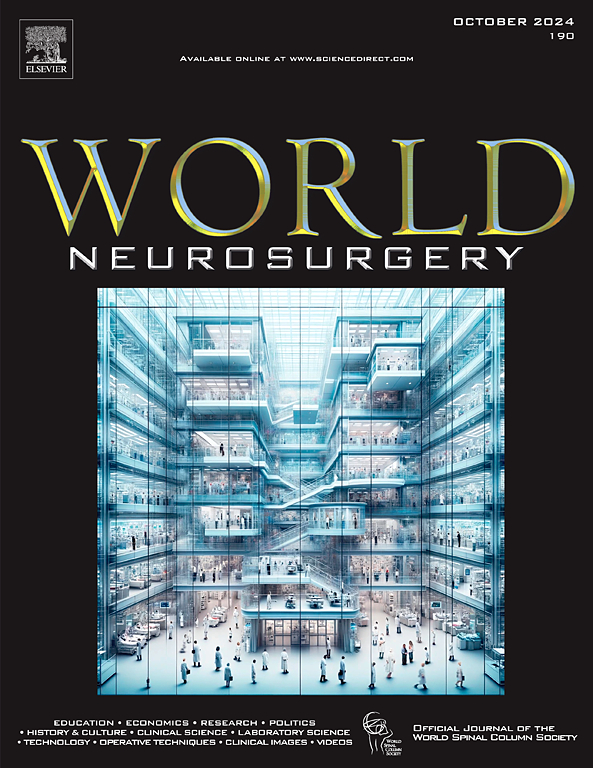Otolaryngology-Assisted Approach for Anterior Cervical Discectomy and Fusion
IF 1.9
4区 医学
Q3 CLINICAL NEUROLOGY
引用次数: 0
Abstract
First introduced in 1955, anterior cervical discectomy and fusion (ACDF) surgery has seen minimal changes over the years. Its reproducibility, impressive long-term results, and minimal complication rates have established it as one of the most frequently performed cervical spinal fusion surgeries. Yet, postoperative dysphagia remains a concern with a 60% incidence rate. An otolaryngologist's expertise regarding cervical fascial anatomy can inform the spine surgeon's approach to an ACDF to potentially reduce postoperative dysphagia rates. We describe an illustrative case of a 35-year-old woman who presented with 8/10 neck and arm pain along with numbness in her fourth and fifth digits for the past 6 months despite multiple conservative treatments. Cervical spine magnetic resonance imaging demonstrated a large C6-7 central disc herniation resulting in severe foraminal stenosis and moderate C5-6 disc herniation. A C5-7 ACDF was performed. Successful ACDF can be performed using an otolaryngologist-assisted neck approach. Rather than opening the 3 layers of the deep cervical fascia individually and serially, the fascial layers were reflected medially by opening the carotid sheath, where the fascial layers coalesce, and performing the dissection to the spine in a lateral-to-medial fashion. This approach may help decrease rates of dysphagia.
求助全文
约1分钟内获得全文
求助全文
来源期刊

World neurosurgery
CLINICAL NEUROLOGY-SURGERY
CiteScore
3.90
自引率
15.00%
发文量
1765
审稿时长
47 days
期刊介绍:
World Neurosurgery has an open access mirror journal World Neurosurgery: X, sharing the same aims and scope, editorial team, submission system and rigorous peer review.
The journal''s mission is to:
-To provide a first-class international forum and a 2-way conduit for dialogue that is relevant to neurosurgeons and providers who care for neurosurgery patients. The categories of the exchanged information include clinical and basic science, as well as global information that provide social, political, educational, economic, cultural or societal insights and knowledge that are of significance and relevance to worldwide neurosurgery patient care.
-To act as a primary intellectual catalyst for the stimulation of creativity, the creation of new knowledge, and the enhancement of quality neurosurgical care worldwide.
-To provide a forum for communication that enriches the lives of all neurosurgeons and their colleagues; and, in so doing, enriches the lives of their patients.
Topics to be addressed in World Neurosurgery include: EDUCATION, ECONOMICS, RESEARCH, POLITICS, HISTORY, CULTURE, CLINICAL SCIENCE, LABORATORY SCIENCE, TECHNOLOGY, OPERATIVE TECHNIQUES, CLINICAL IMAGES, VIDEOS
 求助内容:
求助内容: 应助结果提醒方式:
应助结果提醒方式:


